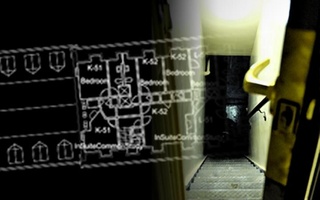Two characters are rehearsing a scene on stage. To the audience, as well as the show’s staff, their conversation is inaudible. After a few moments of apparent silence, an actor interrupts, urging the pair to “project!” To this, one objects: “I can’t. These are the kinds of things you can’t say out loud.”
The director of the show then steps in. “Well that’s very poetic and all, but you’re going to have to project anyway. We can’t hear you at all and we’re up here onstage. How is an audience out in the house going to know what’s going on?”
The tradeoff between realism and the requirements of performance, explored here in a play within a play, is a major theme in nineteenth-century playwright Luigi Pirandello’s meta-theatrical “Six Characters in Search of an Author.” Theater, like all other art, relies on illusion—the credibility of clearly fictional scenes. It is unadulterated praise for theater to be labeled ‘realistic’ or ‘honest.’ Yet theater is also deeply conventional, relying on methods that are consummately unrealistic in order to simulate reality.
“You can’t just whisper on stage,” says English Professor Martin Puchner. In April he released a book entitled “The Drama of Ideas: Platonic Provocations in Theater and Philosophy,” a discussion of philosophical playwrights like Pirandello. To the audience, he says, a whisper would be inaudible: “You have to use a stage whisper.”
Such conventions, which work artificially to make theatrical action immediate and comprehensible to the typical audience, are firmly entrenched in the customs of theatrical production. But two productions happening in Cambridge in the next few weeks directly challenge these conventions through the theatrical medium itself. A Harvard-Radcliffe Dramatic Club (HRDC) production of “6 Characters”—billed as “6” instead of “Six,” and incorporating a Harvard College setting—will run in the Loeb Drama Center Experimental Theater from October 21 to 23. In November, the Massachusetts Institute of Technology (MIT) will host a production of 30 plays from “Too Much Light Makes the Baby Go Blind,” a show created by a group of Chicago dramatists known as the Neo-Futurists to bring more direct reality to the stage.
According to Puchner, philosophical concepts have historically been viewed as antithetical to the action of dramatic art—but both of these productions manage to address the issues surrounding artistic representation while avoiding tedious pedagogy. By adding layers of illusion into its plot, “Six Characters” uses meta-theater to explore the philosophical dialectic between performance and reality. The Neo-Futurists take a drastically different approach, destructing the proverbial fourth wall between actor and audience in order to create what they believe is a more honest form of theater. Through unconventional yet different understandings of the balance between illusion and authenticity, Pirandello and the Neo-Futurists seek to test the limits of drama’s capabilities and redefine theater’s relationship with reality.
MOMENTS OF CROSSING
In “The Drama of Ideas,” Puchner argues that philosophy and theater have a conflicted history of mutual attraction and repulsion. Their first intersections occurred in Plato’s dialogues, with fictional discussions of philosophical matters. “He invented characters and placed them in settings and scenes,” Puchner says. “They exchange dialogue but its not just dry abstract philosophy. There’s a lot of human interaction in the course of these dialogues: characters get embarrassed, they tease each other.”
After a period of independence, the two forms merged again around 1900 in the dramas of George Bernard Shaw, and the works of existentialist playwrights like Samuel Beckett and Jean-Paul Sartre, and Pirandello himself. The resurgence has continued unabated, and even, in the case of Tom Stoppard, developed a major following. Still, Puchner adds, “I don’t think that all of a sudden there will be tons of Broadway shows that are philosophical dramas.” The HRDC, itself has produced numerous productions of plays by August Strindberg, Bertolt Brecht, and Sartre in recent years.
Despite this renaissance, Puchner identifies a conflicted relationship between philosophy and theater. “Both have often dissociated themselves, but then again and again there are moments of crossing,” he says.
Their frequent divergence demonstrates some mutual distrust. This tension stems in part from the apparent incompatibility of theatrical action and philosophical cogitation According to Puchner, “when you start to study theater, often the first thing you’re told is that ‘drama’ in Greek means ‘action.’ So drama should be based on action, not ideas, and if you introduce too many ideas you ruin it.” Jesse T. Nee-Vogelman, Director of the HRDC’s “6 Characters,” appears to agree. “A lot of people don’t have tolerance for that kind of thing... they want something that’s very straightforward and relaxing to watch. You want to stay away from being preachy,” he says.
Historically, philosophers have also criticized theater. “Philosophers often considered the theater a place of mere appearance, not essence, deceit rather than truth, and so felt that philosophy should actively steer away from it,” Puchner says.
On the other hand, dramatic expression can keep abstract ideas grounded. “Suddenly, philosophy is not only a question of abstract deduction and arguments, but anchors those arguments in some kind of character, in a particular situation, and therefore makes it more concrete,” says Puchner.
The collision of the two disciplines can also inspire light comedy. “One of the earliest anecdotes in the philosophical tradition, attributed to Thales, is that he was walking along, looking at the sky, and he fell into a ditch. This is the origin of the absent-minded philosopher, who has his mind in the clouds,” Puchner says. The Father in “Six Characters,” the philosophical center of the play, also plays into this comic tradition. This does not mean Pirandello thinks these ideas are ludicrous—rather, Puchner says, “both Shaw and Pirandello were masters of the comedy of ideas.”
“THE TRUTH IS WHAT WE SAY IT IS”
Read more in Arts
Wanderlust: Why We LeaveRecommended Articles
-
 Preserving Some of Harvard’s Best Kept Secrets
Preserving Some of Harvard’s Best Kept Secrets -
 Hasty Pudding Shields John Harvard from Dangerous Tourists
Hasty Pudding Shields John Harvard from Dangerous Tourists -
 Hasty Pudding Shields John Harvard from Dangerous Tourists
Hasty Pudding Shields John Harvard from Dangerous Tourists -
English Department Adds ProfessorsThe English department will welcome two new professors from Columbia University and grant tenure to one of its current associate professors.
-
 'The Picture of Dorian Gray' Gets a Little Wilder
'The Picture of Dorian Gray' Gets a Little Wilder -
Faculty Enthusiastic About Harvard's Move to Online EducationFaculty response to the announcement has been largely positive, with professors across a wide range of disciplines citing not only increased public access but also on-campus advantages and applications of edX.














